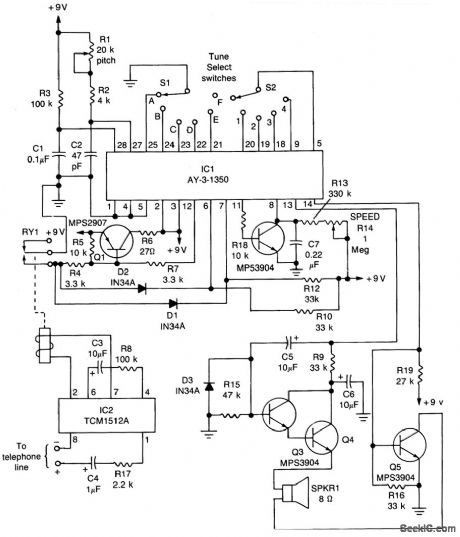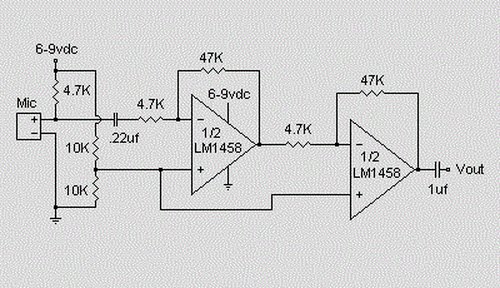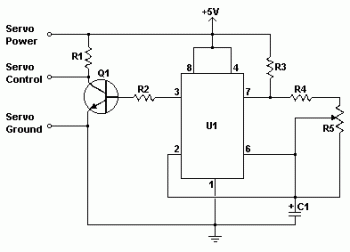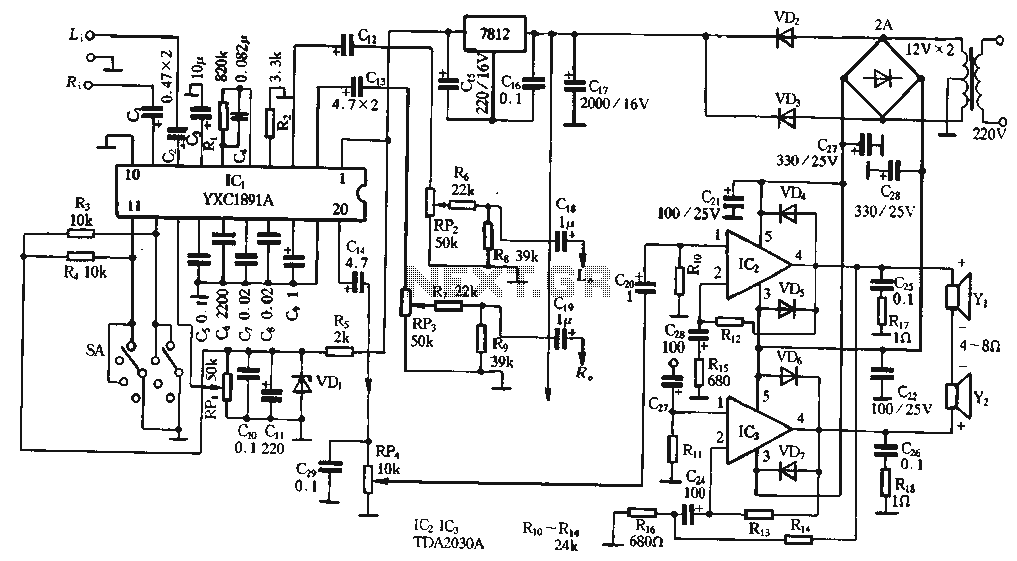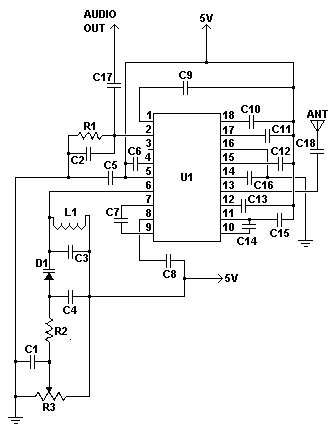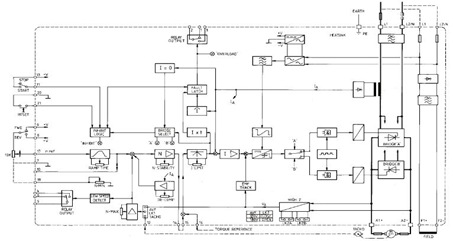
Telephone line monitor circuit
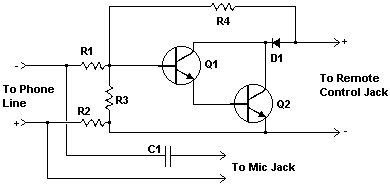
This compact circuit enables automatic recording of phone conversations. It connects to the phone line, the microphone input of a tape recorder, and the remote control jack of the recorder. The circuit detects the voltage level in the phone line and initiates recording when the voltage drops to 5 volts or lower.
This circuit utilizes a voltage sensing mechanism to monitor the phone line for activity. When a call is initiated, the voltage typically remains above 5 volts. However, once the call is in progress and the voltage drops to 5 volts or less, the circuit triggers the recording function. This is achieved through a combination of a voltage divider and a transistor switch, which activates the tape recorder.
The circuit can be designed with a simple NPN transistor as a switch, where the base is connected to the voltage divider that senses the phone line voltage. The collector of the transistor connects to the remote control jack of the tape recorder, allowing it to start recording when the transistor is activated. Additionally, a resistor-capacitor (RC) timing circuit may be employed to ensure that the recording starts smoothly without any initial noise or delay.
Powering the circuit can be accomplished using a small battery or a power supply connected to the tape recorder. Care should be taken to isolate the circuit from the phone line to prevent any interference or damage. Incorporating a diode for reverse polarity protection is advisable, ensuring the circuit remains safe from accidental connection errors.
Overall, this automatic recording circuit provides a practical solution for capturing phone conversations without manual intervention, making it a valuable tool for various applications such as interviews, meetings, or personal record-keeping.This nifty little circuit lets you record your phone conversations automatically. The device connects to the phone line, your tape recorder`s microphone input, and the recorder`s remote control jack. It senses the voltage in the phone line and begins recording when the line drops to 5 volts or less..
🔗 External reference
This circuit utilizes a voltage sensing mechanism to monitor the phone line for activity. When a call is initiated, the voltage typically remains above 5 volts. However, once the call is in progress and the voltage drops to 5 volts or less, the circuit triggers the recording function. This is achieved through a combination of a voltage divider and a transistor switch, which activates the tape recorder.
The circuit can be designed with a simple NPN transistor as a switch, where the base is connected to the voltage divider that senses the phone line voltage. The collector of the transistor connects to the remote control jack of the tape recorder, allowing it to start recording when the transistor is activated. Additionally, a resistor-capacitor (RC) timing circuit may be employed to ensure that the recording starts smoothly without any initial noise or delay.
Powering the circuit can be accomplished using a small battery or a power supply connected to the tape recorder. Care should be taken to isolate the circuit from the phone line to prevent any interference or damage. Incorporating a diode for reverse polarity protection is advisable, ensuring the circuit remains safe from accidental connection errors.
Overall, this automatic recording circuit provides a practical solution for capturing phone conversations without manual intervention, making it a valuable tool for various applications such as interviews, meetings, or personal record-keeping.This nifty little circuit lets you record your phone conversations automatically. The device connects to the phone line, your tape recorder`s microphone input, and the recorder`s remote control jack. It senses the voltage in the phone line and begins recording when the line drops to 5 volts or less..
🔗 External reference
Warning: include(partials/cookie-banner.php): Failed to open stream: Permission denied in /var/www/html/nextgr/view-circuit.php on line 713
Warning: include(): Failed opening 'partials/cookie-banner.php' for inclusion (include_path='.:/usr/share/php') in /var/www/html/nextgr/view-circuit.php on line 713
